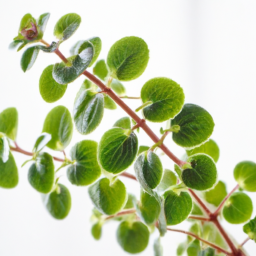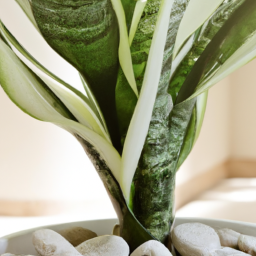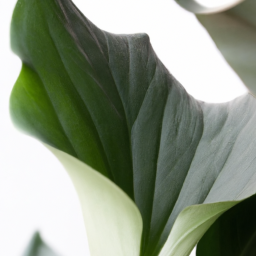
Are you looking to add some greenery to your indoor space but don’t have the luxury of drainage holes in your plant pots? Fear not, because today we’re going to discuss the wonderful world of indoor plants without drainage. Many people shy away from having plants indoors without proper drainage, but with the right care and attention, you can still enjoy the beauty of lush greenery in your home. Let’s explore some tips and tricks for keeping your indoor plants thriving, even without drainage.
Pros and Cons of Using Indoor Plants Without Drainage
Benefits of Using Indoor Plants Without Drainage
Indoor plants can bring a touch of nature into your home, creating a calming and peaceful atmosphere. When you choose to use indoor plants without drainage, you can enjoy the benefits of having greenery in your space without the worry of water leaking onto your floors or furniture. This can be especially beneficial if you live in an apartment or rental property where making holes for drainage may not be allowed.
Another advantage of using indoor plants without drainage is that it allows you to control the amount of water your plants receive more easily. With drainage holes, excess water can quickly drain out, making it harder to gauge how much water your plants actually need. By using pots without drainage, you can water your plants more precisely, helping to prevent overwatering and root rot.
Additionally, using indoor plants without drainage can be a great option for plants that prefer to dry out slightly between waterings. Some plants, such as succulents and cacti, thrive in drier conditions and may not require as much water as other plants. By using pots without drainage, you can better regulate the moisture levels for these types of plants.
Drawbacks of Using Indoor Plants Without Drainage
While there are benefits to using indoor plants without drainage, there are also some drawbacks to consider. One of the main disadvantages is the risk of overwatering your plants. Without drainage holes, excess water can accumulate at the bottom of the pot, leading to waterlogged soil and potentially causing root rot. It can be more challenging to gauge how much water your plants actually need when using pots without drainage, increasing the risk of overwatering.
Another drawback of using indoor plants without drainage is the potential for salt buildup in the soil. When water evaporates from the soil, it can leave behind mineral deposits, such as salts, which can accumulate over time. With drainage holes, excess salts can be flushed out when watering your plants. Without drainage, salts can build up in the soil, potentially harming your plants.
Lastly, using indoor plants without drainage can make it more difficult to correct watering mistakes. If you accidentally overwater your plants, it can be challenging to remove the excess water without drainage holes. This can lead to waterlogged soil and root rot, which can be detrimental to the health of your plants.
Tips for Using Indoor Plants Without Drainage
When using indoor plants without drainage, it’s important to choose the right type of potting mix for your plants. Opt for a well-draining mix that allows water to flow through easily, helping to prevent waterlogged soil. You can also add a layer of gravel or rocks at the bottom of the pot to create a reservoir for excess water, reducing the risk of water accumulating at the bottom.
Be mindful of how much water you give your plants when using pots without drainage. It’s important to water your plants sparingly and allow the soil to dry out slightly between waterings to prevent overwatering. Monitor your plants closely for signs of overwatering, such as yellowing leaves or wilting, and adjust your watering schedule accordingly.
Consider using a moisture meter to help gauge the moisture levels in the soil of your plants. This can be especially helpful when using pots without drainage, as it can be more challenging to determine when your plants actually need water. A moisture meter can provide you with accurate readings, helping you to water your plants more effectively.

Best Practices for Watering Indoor Plants Without Drainage
Understanding the Importance of Proper Watering
When it comes to caring for indoor plants without drainage, proper watering is crucial to ensure the health and longevity of your plants. Without proper drainage, excess water can accumulate in the soil and lead to root rot, which can ultimately kill your plants. It is important to understand the specific watering needs of each plant species you have and adjust your watering schedule accordingly.
One way to determine if your plants need water is to check the soil moisture level. Stick your finger about an inch into the soil – if it feels dry, it’s time to water. It’s also important to water your plants thoroughly, allowing the water to penetrate the entire root system. Avoid watering too frequently, as this can lead to waterlogged soil and root rot.
Another important aspect of proper watering is to use room temperature water. Cold water can shock the roots of your plants, while hot water can scald them. Letting tap water sit out for 24 hours before using it can help remove any chlorine or other chemicals that may harm your plants.
Watering Techniques for Indoor Plants Without Drainage
When watering indoor plants without drainage, it’s important to use the right techniques to prevent overwatering and ensure proper moisture levels for your plants. One effective technique is bottom watering, where you place your plant in a saucer filled with water and allow the roots to absorb water through the drainage holes in the bottom of the pot. This method ensures that the roots get the water they need without the risk of waterlogging the soil.
Another technique is to use a watering can with a narrow spout to direct the water to the base of the plant, avoiding getting water on the leaves. This can help prevent the spread of diseases and pests that thrive in wet conditions. It’s also important to water your plants in the morning, allowing any excess water to evaporate throughout the day and preventing the soil from staying too wet.
If you notice that your plant’s soil is staying too wet or if the plant is showing signs of overwatering, such as yellowing leaves or wilting, it’s important to adjust your watering schedule accordingly. Allow the soil to dry out slightly before watering again, and consider repotting your plant in a pot with drainage holes to prevent further issues.
Tips for Maintaining Healthy Indoor Plants Without Drainage
In addition to proper watering techniques, there are a few tips you can follow to ensure the health and vitality of your indoor plants without drainage. One important tip is to use a well-draining potting mix that allows excess water to flow through the soil and prevent waterlogging. You can also add a layer of gravel or pebbles to the bottom of your pot to create a drainage layer and prevent the roots from sitting in water.
It’s also important to monitor the humidity levels in your home, as dry air can lead to faster evaporation of water from the soil. You can increase humidity levels by placing a humidifier near your plants or grouping them together to create a microclimate with higher humidity. Regularly misting your plants with water can also help maintain proper moisture levels in the air.
Finally, it’s important to regularly inspect your plants for any signs of stress or disease, such as yellowing leaves, wilting, or pest infestations. By staying vigilant and addressing any issues promptly, you can ensure that your indoor plants thrive in a drainage-free environment. Remember, each plant species has different watering needs, so it’s important to research the specific requirements of your plants to provide them with the best care possible.

Creative Solutions for Proper Drainage in Indoor Plant Containers
As an expert in indoor plants without drainage, I understand the importance of finding creative solutions to ensure the health and well-being of your plants. While traditional plant containers with drainage holes are ideal, there are ways to successfully grow plants in containers without drainage. In this guide, I will provide you with innovative and effective solutions to help your indoor plants thrive.
Choose the Right Potting Mix
When planting indoor plants in containers without drainage, it is crucial to select the right potting mix to promote proper drainage. Opt for a well-draining mix that is specifically designed for indoor plants, such as a cactus or succulent mix. These mixes are formulated to prevent water from pooling at the bottom of the container, reducing the risk of root rot.
Additionally, consider adding perlite or coarse sand to the potting mix to improve drainage. These materials help aerate the soil and prevent it from becoming waterlogged. Be sure to mix the additives thoroughly with the potting mix before planting your indoor plants.
Remember to avoid using regular garden soil in containers without drainage, as it retains too much moisture and can suffocate the plant roots. By choosing the right potting mix, you can create a healthy environment for your indoor plants to thrive.
Monitor Watering Practices
Proper watering is essential when growing indoor plants in containers without drainage. Overwatering can lead to root rot and other issues, while underwatering can cause the plant to become dehydrated. To prevent these problems, it is important to monitor your watering practices closely.
Before watering your indoor plants, check the moisture level of the soil by inserting your finger into the top inch. If the soil feels dry to the touch, it is time to water your plants. Be sure to water thoroughly until the excess water begins to drain out of the bottom of the container.
Allow the soil to dry out between waterings to prevent waterlogged conditions. Adjust your watering schedule based on the specific needs of your indoor plants and the environmental conditions in your home. By monitoring your watering practices, you can help your plants thrive in containers without drainage.
Use a Saucer or Tray
To prevent water from pooling at the bottom of your indoor plant containers, consider using a saucer or tray to catch excess water. Place the container on top of the saucer or tray to allow the water to drain away from the roots of the plant. This helps prevent waterlogged conditions and reduces the risk of root rot.
Empty the saucer or tray regularly to prevent standing water from accumulating around the roots of your indoor plants. Avoid allowing the container to sit in water for extended periods, as this can lead to root rot and other issues. By using a saucer or tray, you can promote proper drainage and create a healthy growing environment for your indoor plants.
With these creative solutions for proper drainage in indoor plant containers, you can successfully grow plants without drainage holes. By choosing the right potting mix, monitoring your watering practices, and using a saucer or tray, you can create a healthy environment for your indoor plants to thrive. Remember to adjust your care routine based on the specific needs of your plants and enjoy watching them grow and flourish in their new home.
In a Nutshell
So you want to bring some greenery into your home, but you’re worried about the lack of drainage in your pots? Don’t worry, you’re not alone! Many plant enthusiasts face this dilemma, but there are ways to keep your indoor plants thriving without drainage holes. One option is to use a layer of rocks or pebbles at the bottom of your pot to create a reservoir for excess water. This will prevent your plants from sitting in water and developing root rot.
Another option is to be mindful of your watering habits. Instead of watering on a schedule, check the soil moisture levels before giving your plants a drink. Overwatering is a common mistake that can be detrimental to plants without drainage, so it’s important to let the soil dry out slightly between waterings. Additionally, using a well-draining potting mix can help prevent water from pooling at the bottom of your pots. With a little extra care and attention, you can enjoy the beauty of indoor plants without the worry of drainage issues.
Here are some FAQs you’d be interested in:
Q1. Can indoor plants survive without drainage holes?
A1. Yes, indoor plants can survive without drainage holes as long as proper watering techniques are followed.
Q2. How often should I water indoor plants without drainage?
A2. It is important to water indoor plants without drainage sparingly to avoid overwatering. Allow the soil to dry out slightly between waterings.
Q3. What type of pots are best for indoor plants without drainage?
A3. It is recommended to use pots with drainage holes whenever possible. However, if using pots without drainage, choose pots with good airflow and consider adding a layer of gravel at the bottom for drainage.
Q4. How can I prevent root rot in indoor plants without drainage?
A4. To prevent root rot in indoor plants without drainage, ensure that the soil is well-draining and avoid overwatering. Use a moisture meter to monitor soil moisture levels.
Q5. What are some low-maintenance indoor plants that can thrive without drainage?
A5. Some low-maintenance indoor plants that can thrive without drainage include snake plants, pothos, and spider plants. These plants are more forgiving of occasional overwatering.

James Wong is a renowned ethnobotanist, plant scientist, and local television presenter. With a passion for demystifying plant science, he is known for translating complex botanical concepts into practical advice for everyday plant enthusiasts. James’s expertise spans from traditional gardening to cutting-edge plant technologies, making his insights accessible and informative.


